Social Fabric
Seven artists turn fabric into a tactile discussion of culture, commerce and war
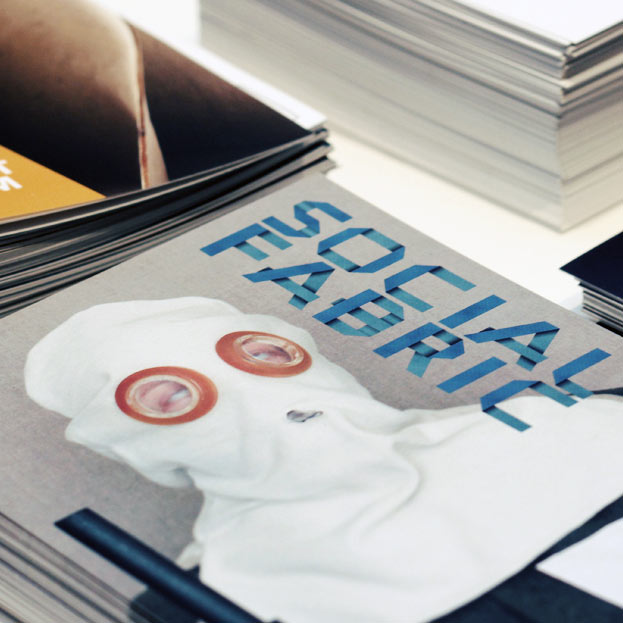
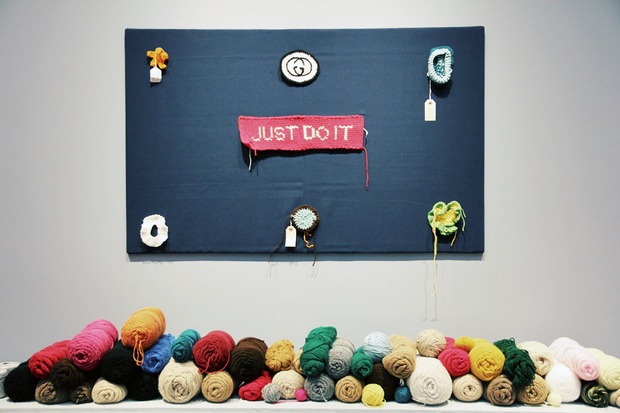
Currently showing at Craft and Folk Art Museum (CAFAM) of Los Angeles, “Social Fabric” presents the work of seven artists across installations, performances, workshops and collaborative projects made primarily from cloth. Curated by Anuradha Vikram of the Worth Ryder Gallery in Berkeley, the exhibit showcases the work of Stephanie Syjuco, Drew Cameron, Allison Smith, Bean Gilsdorf, Rachel Bernstein, Donna Huanca and Carole Frances Lung (AKA Frau Fiber), who have all created conceptual art projects with the purpose of examining the issues surrounding mass production and consumption.


Stephanie Syjuco
Stephanie Syjuco spearheaded her global Counterfeit Crochet Project, an array of crafty versions of designer handbags, with the intention of “debasing and defiling designer items one step at a time.” Syjuco displays bags—including a perky Murakami Louis Vuitton—that have been painstakingly crocheted by participants around the world. In the middle of the gallery, a table filled with skeins of yarn invites museum visitors to take a stab at their own handbag or at least attempt a few rows of crochet stitches.
Throughout the course of the exhibition, Syjuco will be offering workshops to learn techniques for crocheting handbags. On opening night Carol Zou from Yarnbombing Los Angeles was on hand to help teach the craft of crochet, and is participating in Granny Squared, an ongoing project that will eventually cover CAFAM in granny squares made around the world.
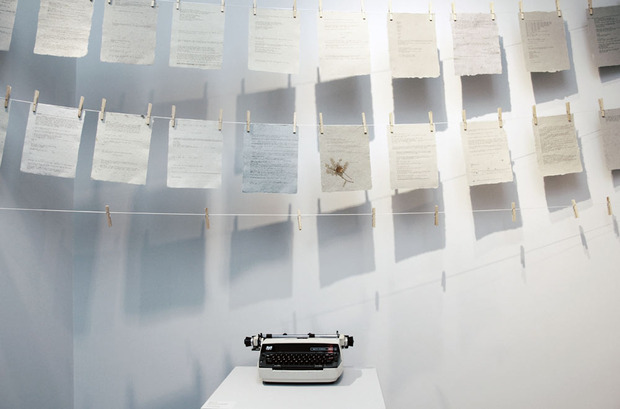
Drew Cameron
In the Combat Paper Project, military textiles are manipulated to explore the emotional toll of war and therapeutic potential of art. Drew Cameron recycled military uniforms donated by veterans into paper, which then became the writing surface for text by service members meant to help them deal with feelings of trauma. Several emotional texts from the workshops are displayed above a vintage typewriter.

Allison Smith
Allison Smith is drawn to communities that reenact military history, and the artist holds workshops to teach veterans how to sew. Her body of work at CAFAM is an eerie series of Trench Art pieces, a form of expression that is made by both civilians and military as a response to dealing with conflict. Her handmade gas masks with haunting eye holes and ghostly reverence are formed from fabric as well as leather, metal, ribbon, plastic, hardware and staples.
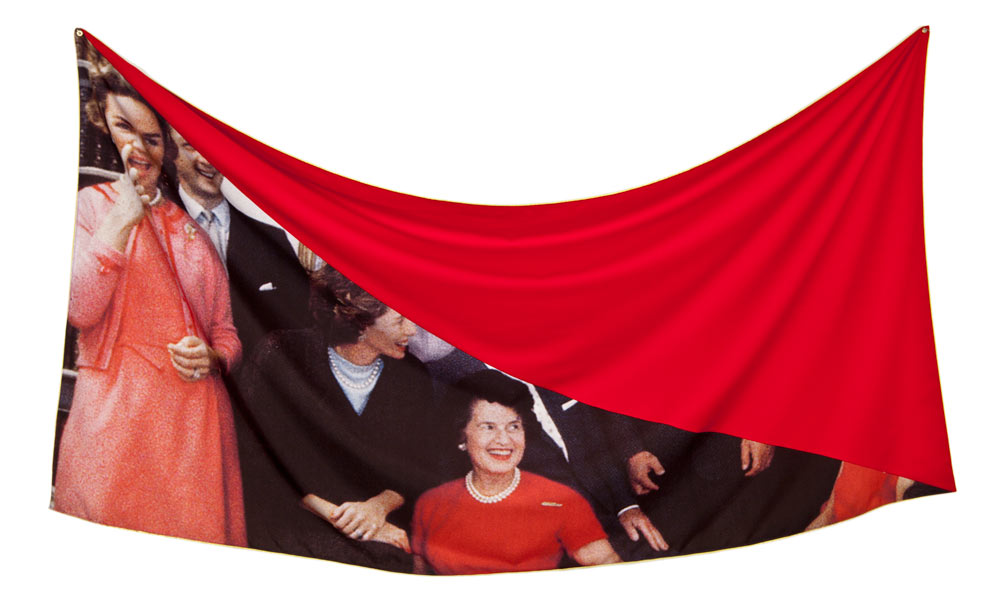
Bean Gilsdorf
Bean Gilsdorf makes geometric flags by printing digital images of significant historical events on fabric. Gilsdorf’s colorful Flags for Allegiance and Flags for the New Frontier show images of American innovation and multiculturalism. For a flag depicting the Kennedy family, Gilsdorf used a piece of fabric meant to conjure red dresses worn by Rose and Jacqueline Kennedy.
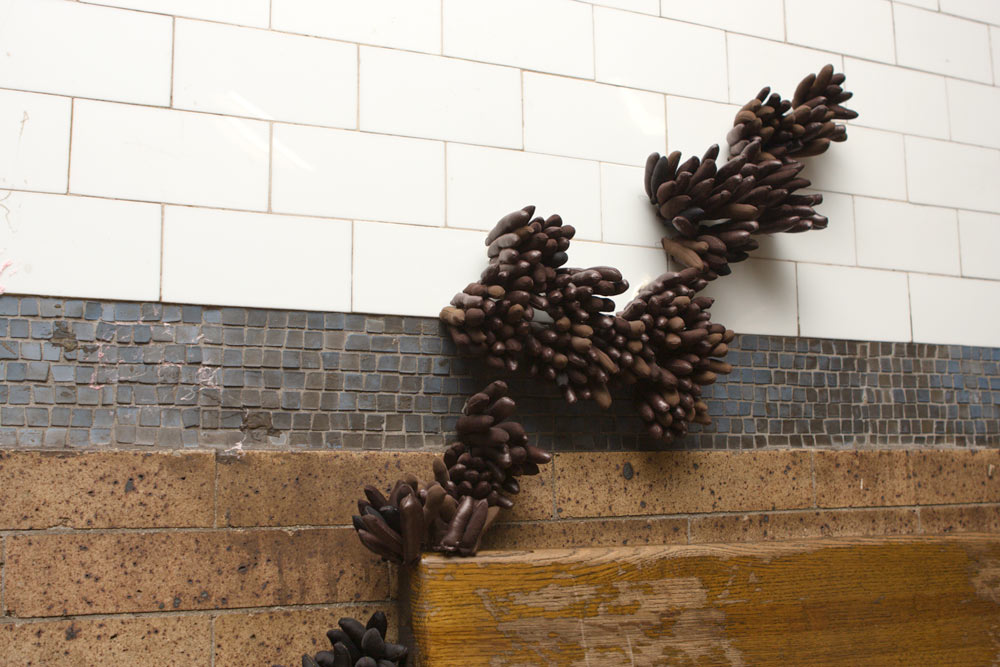
Rachel Bernstein
Rachel Bernstein created fabric spores meant to decay and decompose when installed in natural and urban settings. Hanging on the wall, photographs of spores implanted in rock crevices, wood forms and the tile wall of a subway station show the ephemeral nature of the natural material and question the reverence of permanent public art.
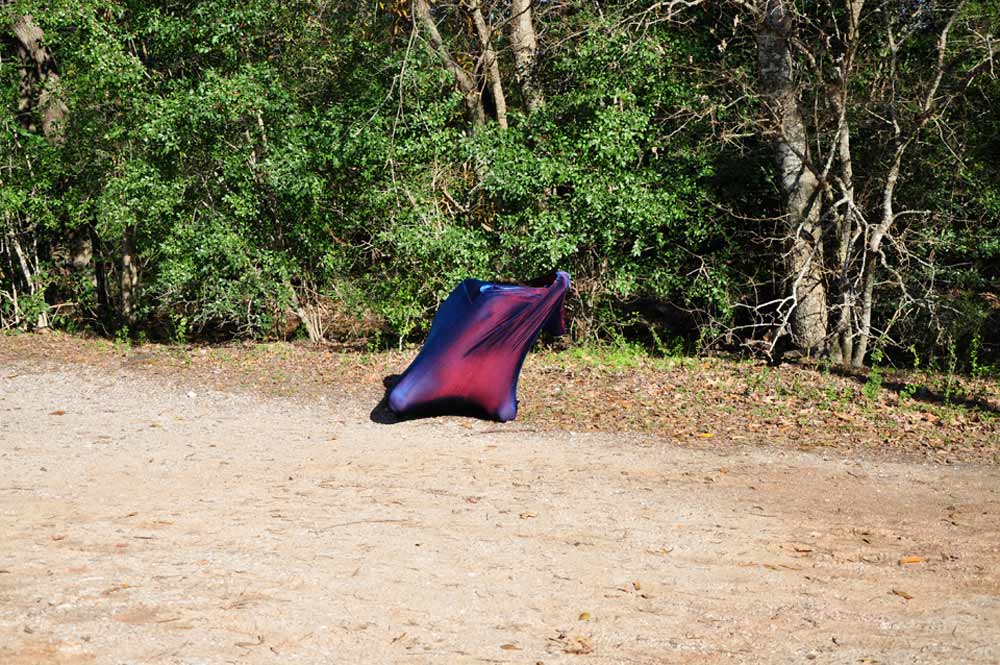
Donna Huanca
Displayed behind glass, Donna Huanca’s objects made from discarded clothing, shoes and ephemera reveal an anthropological exploration of her Latin American roots. Huanca is also showing the photographic series “Unearthling,” in which the artist covers her entire body in fabric and photographs herself in various landscapes.
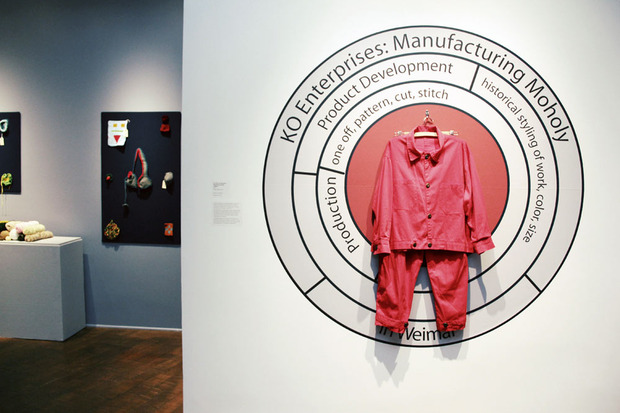
Frau Fiber
Performance artist Carole Frances Lung’s installation features her Bauhaus-inspired Knock Off Enterprises as well as several of her performance uniforms displayed on dress forms. She shares her handmade journal scrapbooks chronicling Frau Fiber’s projects including the Triangle Shirtwaist Fire, bicycle-powered sewing machine and Haiti projects. According to Lung, Frau Fiber communicates her identity through the uniforms that she makes herself: “Frau is a former East German garment worker turned activist after her job was outsourced to China,” says Lung. Frau’s uniforms that are part of Social Fabric include the Useful Work vs. Useless Toil uniform that is inspired by the William Morris essay of the same name. Frau hacked apart a men’s suit and reassembled it as a boxy house-dress with a corresponding cap.
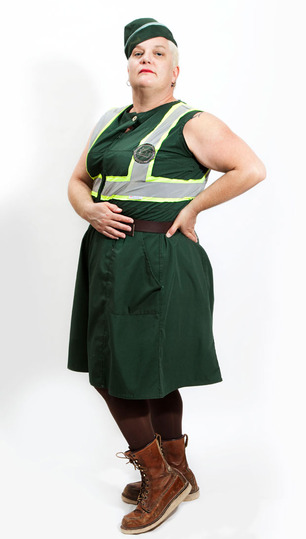
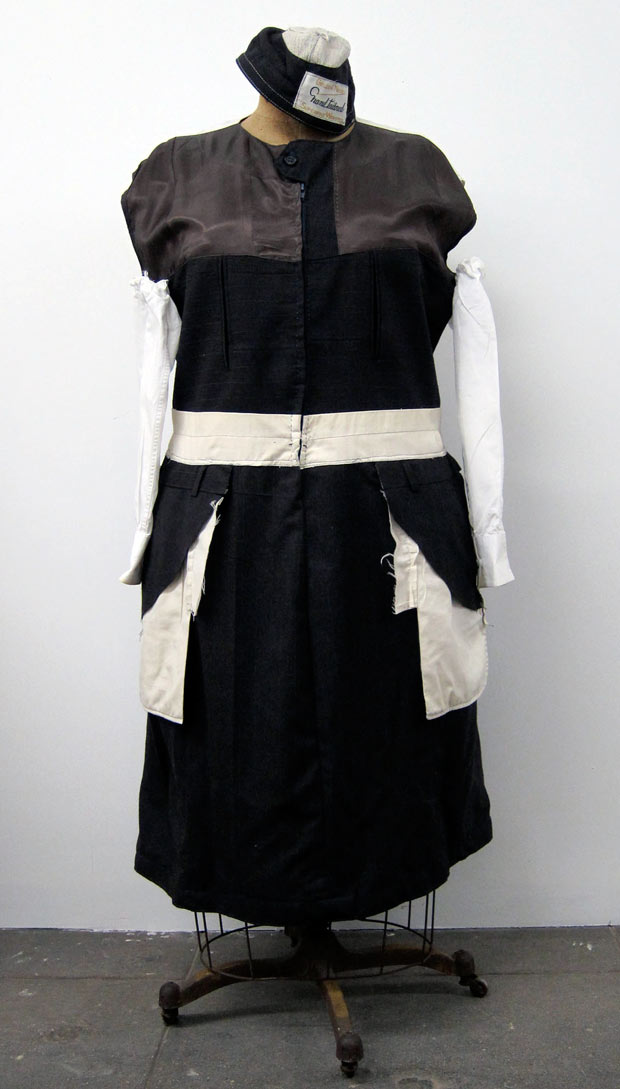
Frau created her Triangle Shirtwaist Fire commemoration uniform for a performance at Den Contemporary in Los Angeles. For that event she produced a replica of a triangle shirt blouse for each of the stitchers killed in that fire. On the anniversary of the Triangle Shirtwaist Fire, Frau will lead a workshop instructing how to make a shirtwaist blouse. Then on 1 May 2013, Frau will bring her bicycle-powered sewing machine to the museum for a collaborative mending project. People will be able to bring their objects to be mended on the custom bicycle that needs volunteer peddlers to run the sewing machine. “I am excited to see the possibilities for having a dialogue about fiber art in Los Angeles because there are a lot of artists working in this way,” says Lung. “I am excited that there is an art institution that is supporting this process by bringing it to an audience of people here in Los Angeles.”
Social Fabric will be on view at CAFAM at 5814 Wilshire Boulevard in LA through 5 May 2013.
Installation photographs by Anne Carmack; Frau Fiber uniform images by Francesca Balaguer-Mercado and Carole Frances Lung; All other images courtesy of CAFAM












